The 5 Best Budget 1440p Monitors Reviewed
Expansive Resolutions that Don’t Cost the World
1080p has been the standard resolution for most computer applications for a while now. It’s provided us with awesome gaming and video streaming experiences, and we thank it profusely for that, but times have changed.
Upgrading to a 1440p monitor is probably one of the top three things you can do to augment your visual experience. Whether you’re a gamer, filmmaker, graphic designer, animator, photographer, or…well anything, 1440p changes the game…all the games – If you can afford it.
As much as we appreciate and revere the speed at which computer tech is evolving, keeping up with the constant upgrades is emptying our pockets faster than we can fill them, but don’t worry.
We’re here to show you five awesome 1440p monitors you can afford on a budget. Sound good? Good. Let’s go!
Craving Clarity
No need to go zooming down the page. We’ve got you covered. Here’s our cheap champion right here.
Best Budget 1440p Monitors
1. Acer Predator XB271HU 1440p 27-in Monitor
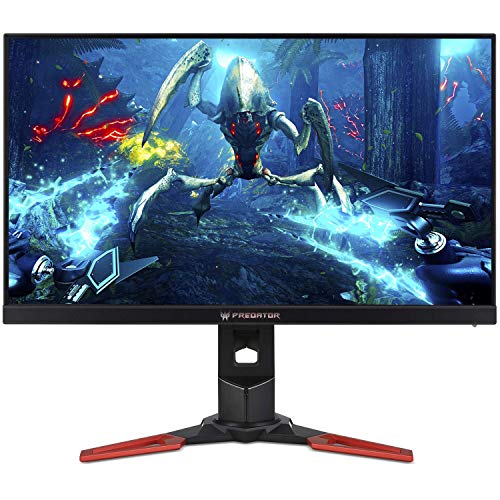
It’s at the very limit of what we’d consider a budget monitor, but it’s such incredible value for money, it still had to be our number one pick. With IPS paneling, you can play directly in front of the screen or at some pretty gnarly angles and the color and contrast remain exquisite.
It has a 144Hz refresh rate, which is going to smooth out even the most visually demanding games into pure perfection, and in terms of response rate, you’re getting a very respectable 4ms.
It’s not the fastest, but anywhere between 1 and 5ms is good enough for awesome color shifting. You can also expect silken tear-free gameplay thanks to the integrated Nvidia G-sync technology.
One thing that must be stressed about this monitor is just how vivid and lush the color profile is, and thanks to the blue light filter and flicker-less pixels, you’ll be able to gawp into the technicolor void for ages with no eye strain.
In terms of design, it’s another kill for the Predator! The ergonomic, blood-red feet – or rather fangs – are splayed to allow you to get as close to the action as possible, and the stand enables tilting, pivots, swivel, and height adjustment.
- 27 Inches WQHD (2560 x 1440) widescreen with NVIDIA G SYNC technology
- Refresh rate: 144Hz (overclocking to 165Hz) Using display port
- Response time: 4ms, Pixel Pitch: 0. 233 millimeter. Flicker less technology reduces annoying screen flickering that can cause eye strain when viewing the monitor for long periods.
- 2 x 2W speakers. Brightness: 350 nit. Panel technology: In plane switching (IPS) Technology. Tilt angle 5° to 35°. Swivel angle 60°. Maximum adjustable Height 5.91 inches
- Signal inputs: 1 x HDMI (V1.4) & 1 x Display port. Viewing angle: 178° (H)/ 178° (V)
2. Viotek GNV34DBE 34” 1440p Curved Gaming Monitor
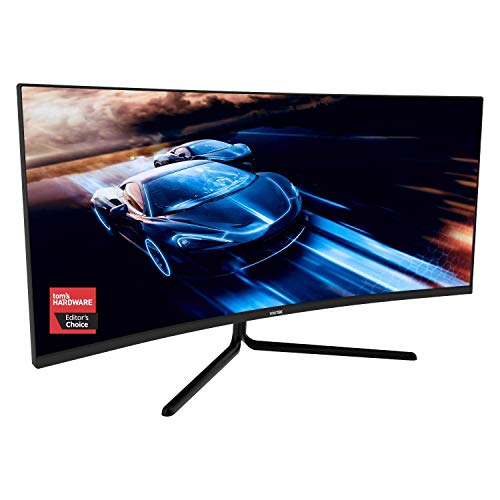
Viotek combines their 1440p resolution with a 144Hz refresh rate and 4ms response time to give you unbelievable contrast, motion and color, even from a distance.
It’s a curved monitor which is great for presenting a more true to life 3-dimensional space, but it means that the whopping 34” display actually feels more like 32”..
You also get the much desired AMD freesync technology built into this monitor, meaning graphically intense games are going to flow like a river, no screen-tears or lag in sight.
When it comes to design, we love the uber-thin bezel, but we’re not so taken with the stand, it’s a little too flimsy for such a big monitor. Connectivity-wise, you’re looking at two HDMIs and two DisplayPorts.
- ULTRAWIDE QHD MONITOR RESOLUTION — Enjoy the magic of a VA panel, optimized with lightning-fast 144Hz monitor refresh rates. Expect precise pixel detail across the board, all with zero dropped frames and cinema-quality 116% sRGB / 87% DCI-P3 color gamut.
- SERIOUS CURVES FOR SERIOUS ACTION — Our 1440p monitor combines a 21:9 aspect ratio with a deep 1500R curvature to pull you deeper into the action. This ergonomic monitor covers more of your natural field of vision, from edge-to-edge.
- SMOOTHEST PLAY IN TOWN — Seamless transitions. Smooth motion. Artifact-free visuals. AMD FreeSync puts an end to choppy gameplay across the refresh spectrum. And low-framerate compensation (LFC) handles the rest, when the refresh rate dips below 48Hz.
- VIOTEK GAME-WINNING SUITE — Free Sync isn’t the only tool of the trade designed to help you score and score big. GAMEPLUS crosshairs for direct hits, every time. And FPS/RTS display optimization to bring out detail in shadow-heavy scenes. G-SYNC-compatible.
- DON’T PLAY WITH DEAD PIXELS – New Viotek PC gaming monitors come with our Zero-Tolerance Dead Pixel Policy and 3-Year Limited Warranty, fully backed by a U.S. company. Have questions? Reach out to our customer support team, via email, phone or live chat.
3. Dell Ultrasharp U2791DX 27-in 1440p Monitor
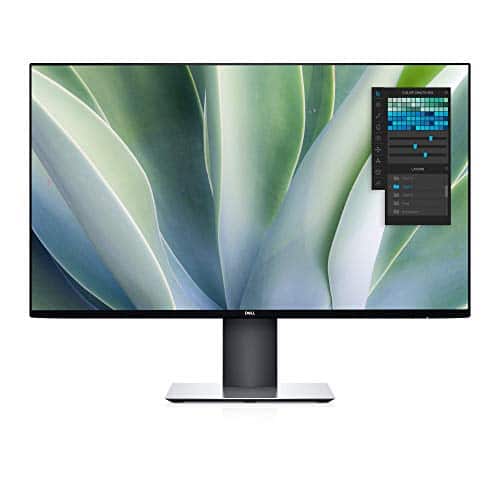
The 60Hz refresh rate lags behind the quality of the resolution a little, but you’re still going to be able to stream videos and play games with awesome picture quality. The 5ms response time sees to that.
One of the most impressive features of this monitor is its physical flexibility. It can accomplish any of the normal movements, pivot, tilt, height adjustment, but the swivel…the swivel is something else. You can actually spin this thing into a fully vertical position.
This monitor is the first on our list that has been created with streamlined cable management in mind. Despite having one of the most impressive selections of ports, from the stand-alone HDMI to the three USB facilities, the ingenious cut out in the stand allows you to run cables neatly out of sight.
- See details in striking clarity. With QHD (2560x1440) resolution, you'll get 1.77 times more details than full HD
- Your Ultra sharp monitor is factory calibrated at 99% RGB Coverage to an accuracy of delta-e less than 2, for precise hues right out of the box
- See consistent, vibrant colors across a wide viewing angle enabled by In plane switching (IPS) Technology. Power Consumption (On mode):26 W
- 3 year Warranty
- 60 hertz
4. Acer V277U 27-in IPS 1440p Monitor
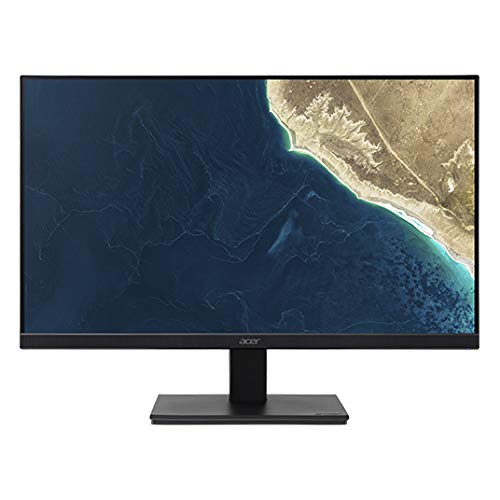
The V277U is one of the best bang for buck budget 1440p monitors on the market at the minute. Its base refresh rate is 60Hz, but you can actually boost that by 15Hz using the DisplayPort.
Thanks to a 100% sRGB color gamut, this thing is going to burst with vibrancy straight out of the box. Combine that with the 4ms response time, and you’ve got nothing short of heavenly color and movement.
Adding a whole other level to the fluidity of this Acer’s performance is the Adaptive Sync function which allows for cross-component cooperation with your GPU, eliminating snag and screen-tear when gaming.
It’s pretty limited in its physical design, only capable of tilting, but other than that, it’s an elegant monitor. The thin bezel really makes it a big 27 inches and the stand is nice and sturdy.
If you’re looking for a monitor specifically for gaming, this may not quite cut the mustard, as it’s designed to be as versatile as possible, putting its many hats into many rings.
If you’re looking for a monitor that can do it all, however, including some fairly intensive gaming, the Acer V277U is the jack of all trades powerhouse you’ve been looking for.
- 27" Ips panel with 2560x1440 WQHD resolution
- 75Hz refresh rate, 4ms response time
- 100% sRGB wide Color gamut
- Hdmi, DisplayPort, speaker
- 350 nit, Adaptive Sync
5. Asus Designo MX25AQ 25-in 1440p Monitor
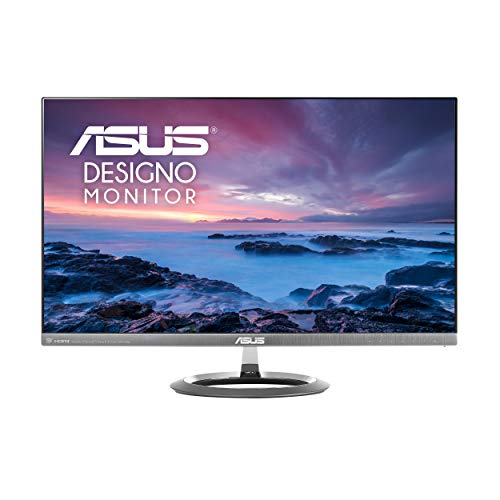
It’s 2 inches smaller than our other monitors, but what’s surprising is that it really seems like one of the only places Asus have cut costs.
Much like our impressive fourth pick, Designo has a 100% sRGB color gamut reinforced by a 5ms grey to grey response time that keeps motion liquid-smooth and colors vibrant without becoming harsh. If you have sensitive eyes, there’s a low blue light option to reduce strain.
The Designo is another monitor designed to cover a lot of computational ground, demonstrated by the number of presets including scenery mode, theatre mode, and game mode, among others.
The question is, does it spread itself too thin? Surprisingly, as long as you don’t have unreasonable expectations, no, it doesn’t.
The 60Hz refresh rate and Adaptive Sync keeps gameplay enjoyable and fast movie sequences fairly crisp. It’s a fantastic work and leisure computer, and amazingly, it has one of the best built-in audio systems you’ll find in a thin monitor.
No products found.
Buying Guide for Budget 1440p Monitors
Before you start trying to narrow down your options blind, let’s run over some of the features that might make your decision easier.
Budget
We’d consider anything downward of $550 a budget 1440p monitor, as they can run well over the $1000 mark.
If that still sounds like an outrageous price tag, there are plenty of cheaper options, but we’d aim for the $300 mark to ensure a certain level of quality.
Response Time
Response time is the speed at which colors can shift on your monitor’s display. Measured in milliseconds, a fast response time is essential if you plan on using your monitor for gaming or watching movies.
Manufacturers normally communicate it as the rate pixels go from grey to grey. Low response times help to prevent motion blurring and ghosting (when the faint specter of an image that was on the screen remains after the image has gone).
The standard response time for gaming is between 1 – 5ms, although anything up to 7ms should be fairly capable.
Refresh Rate
Refresh rate is another important factor to consider if you plan on doing a lot of gaming. It’s measured in hertz and describes how many times a second your display refreshes itself.
A high refresh rate keeps movement smooth, preventing laggy or jagged sequences. Your average gamer probably has a 60Hz monitor, but if you really want to enhance your gaming experience, we’d suggest a minimum of 75Hz or even better, 144Hz.
Flexibility
It can prove quite tricky to find budget monitors with good mobility as it’s an area companies can cut down production costs without slaking fundamental performance. That’s not to say they aren’t some awesomely limber options out there. Just look at our fourth pick.
Full flexibility options should include varying degrees of tilt, pivot, height adjustment, and swivel. Some monitors will only feature a couple, so it makes sense to decide which movement you’d prefer for your setup.
Color Gamut
Simply put, color gamut informs you of the range of colors a monitor can present.
Even at a fairly low budget, you should expect between a 98 and 100% color gamut.
Connectivity
Monitors will have vastly different options in terms of connectivity, but at the very least you should have one HDMI port and DisplayPort.
If you want even more versatility, there are plenty of monitors out there with dual HDMI connectivity.
Syncing
There are a few different syncing technologies but they all do roughly the same thing.
Syncing allows your monitor to communicate with your video card and align its refresh rate with the card’s frames per second.
It prevents screen-tear and lagging, leading to a fluid visual experience.
Paneling
There are three panel types to choose from. Each of them has its own strengths and weaknesses.
IPS (in-plane switching) panels are famous for the depth of their immaculate color displays. You can view them at almost any angle and the display will be just as crisp and vivid as if you were sitting right in front of it.
The reason people sometimes try to avoid IPS monitors is that they can have slightly higher response rates, but we’d argue that most modern IPS systems have amended that issue. Due to their picture quality, IPS monitors are also normally quite a bit pricier than TNs.
TN (Twisted Nematic) panel monitors are all about speed. They facilitate lightning-fast response times and refresh rates, making them a popular choice for hardcore gamers.
If you play a lot of games where split second reactions can be the difference between a win and a loss, TN monitors are perfect for you. You can also expect to snatch a TN monitor up for a fraction of the cost of other panel types.
Sounds pretty good, right? Well before you jump on the first 1440 TN monitor you find, you should know that their color profiles aren’t particularly accurate, and you’re bound to lose picture quality viewing them at an angle.
VA (vertical alignment) is basically a compromise between IPS and TN. They provide you with wider viewing angles than TN, while capturing some of the magic you find in the picture quality of IPS monitors.
People may avoid this kind of paneling as it’s neither here nor there, and their response times often fall below that of both IPS and TN monitors.
Bezel
The bezel of a monitor is the frame.
Ideally, your monitor will have as close to no frame as possible as that increases your display real estate, offering a more immersive experience.
Display Size
Different resolutions have their own sweet spot when it comes to display size.
1440p’s is between 27 and 32 inches. To make the most of your 1440p upgrade, we recommend going as close to 32 as your budget allows, but 27” is still a decent size.
1080p vs. 1440p vs. 2160p
Want to see how 1440p stacks up against other resolutions for gaming? Check out this video:
Frequently Asked Questions
Is 1440p worth it?
We think so, yes, but It depends on your current setup.
If you’re already running 1080p with super-fast response times and refresh rates, unless you buy a top of the range 1440p monitor, you probably won’t notice much difference.
Is 2K the same thing as 1440p?
Not quite. 1440p is 2.5K
What is the perfect size monitor for gaming?
For 1440p it’s anywhere between 27 and 32 inches.
We’d also say that’s probably the general limit for gaming, as you need to be able to take in the whole screen at once.
Conclusion
There you have, monitor maestros, proof you don’t need to grovel to the bank for a loan to kit yourself out with a quality 1440p monitor fit for gaming, streaming, work, or leisure.
If you are looking for something highly specialized for one application, you’ll probably have to pay a little more, but all in all, you can’t go wrong with any of the monitors on our list.





